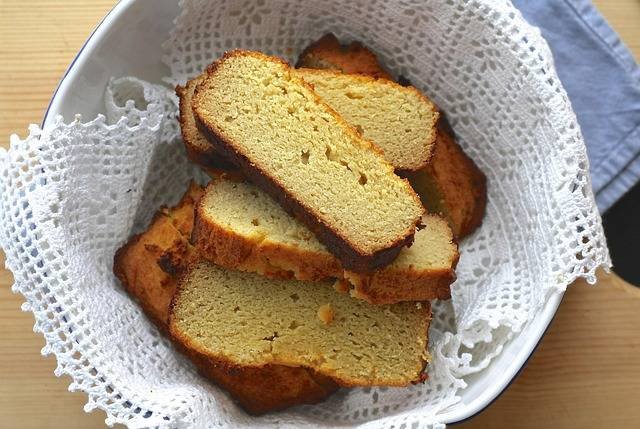Gluten-free foods must rise well, hold their textures, retain moisture and taste delicious. The challenge is that gluten creates the gas-trapping network classic doughs rely on for lift and structure. In modern production, process control and formulation have to replace that missing network. Enzymatic modification offers practical solutions by guiding protein and starch behavior during mixing, proofing, and baking.
What Is Enzymatic Modification?
Enzymatic modification uses food-grade enzymes to reshape dough components, so you get structure and handling similar to gluten products. During preparation, the enzymes work on proteins or polysaccharides to form cross-links and fine-tune viscosity. They act as natural, highly specific catalysts to improve the dough’s behavior and the final product’s quality.

The global gluten-free market was valued at $7.75 billion in 2024 and is expected to grow to $13.67 billion by 2030. Companies like Kemin Food Technologies are at the forefront of creating enzymes for gluten-free pastry production. It offers tailored blends that help with specific baking challenges and give bakers dependable control so they can make gluten-free goods that meet customers’ needs.
Ways Enzyme Modification Addresses Gluten-Free Diet Needs
Enzymes are the keys to unlocking the potential of gluten-free ingredients. Instead of masking problems with gums or starches, enzymes fundamentally change the ingredients, creating better products from the ground up.
1. Building Volume and Crumb
Gluten-free flours cannot trap gas during fermentation, which results in dense products. Specific enzymes like amylases and xylanases tackle this by modifying the starches in rice flour or tapioca starch. This change increases dough viscosity and elasticity, and better elasticity means the dough can hold on to the carbon dioxide gas the yeast produces. The result is a lighter loaf with better volume and a more open crumb structure that looks and feels like traditional pastry.
2. Creating a Stronger Protein Network
Since gluten is a protein, you must build a new network to replace it using other proteins, like those from quinoa or pea rice. This is where transglutaminase works wonders. In baking, it acts as a structural builder and forms stronger protein structures in your gluten-free flour. The new structure gives the dough the strength and elasticity that allows it to be handled and shaped more easily.
3. Improving Softness and Shelf Life
Texture fall-off is a pain point with gluten-free items. Xylanase and related enzymes can adjust water redistribution and cell wall components that influence firming, while amylase variants manage starch retrogradation. Research shows improved elasticity and stickiness when these enzymes are thoughtfully applied because the modification prevents the starches from reorganizing so strictly.
4. Stabilize Fermentation and Proofing Behavior
Because gluten-free pastry dough is more like a thick batter, gas can escape unless you control the viscosity and bubble stability. Studies on gluten-free fermentation kinetics highlight how a controlled matrix makes it easier to keep gas in and aerate the end crumb. Enzymes help you get there by steering viscosity and micro-networking in sync with hydrocolloids, which makes proofing more predictable and reduces batch-to-batch surprises.
5. Enhance Mouthfeel and Flavor
Structure is important, but your customers demand good taste. A survey by the International Food Information Council shows that, for 85% of consumers, taste has the highest impact on food purchasing decisions. In addition, many Americans claim they read nutrition labels, so the ingredients you use matter.
Enzymes like lipases can help, as they modify the fats or lipids in your recipe, turning them into natural emulsifiers. These newly modified lipids create a finer crumb structure that translates to a richer, smooth mouthfeel customers associate with high-quality traditional pastries.
Why Enzymes for Gluten-Free Pastry Production Are in Demand
Food manufacturers are looking for innovative ways to develop products and processes that expand protein applications without losing quality or competitiveness. Enzymes stand out as alternatives to chemical compounds because they are generally recognized as safe and become inactive after cooking. They work through distinct mechanisms to reshape polymerized protein subunits and increase solubility.
A partner like Kemin helps you move with confidence. Its bakery team shares application guides, consumer insights and technical support that translate enzyme science into a steady production plan.
Note that if you label anything “gluten-free” in the U.S., your finished product must meet the Food and Drug Administration’s definition of less than 20 parts per million of gluten. Ensure your sourcing, cross-contact controls and validation all match that bar, so your enzyme gains translate to compliant goods on the shelf.
Advancing Pastry Production Beyond Gluten
The gluten-free puzzle is about actively rebuilding a better product, not just removing an ingredient. Enzymes give you precise control over quality and texture. This way, you can move from simply offering alternatives to creating genuine pastry experiences that capture new and loyal customers.

